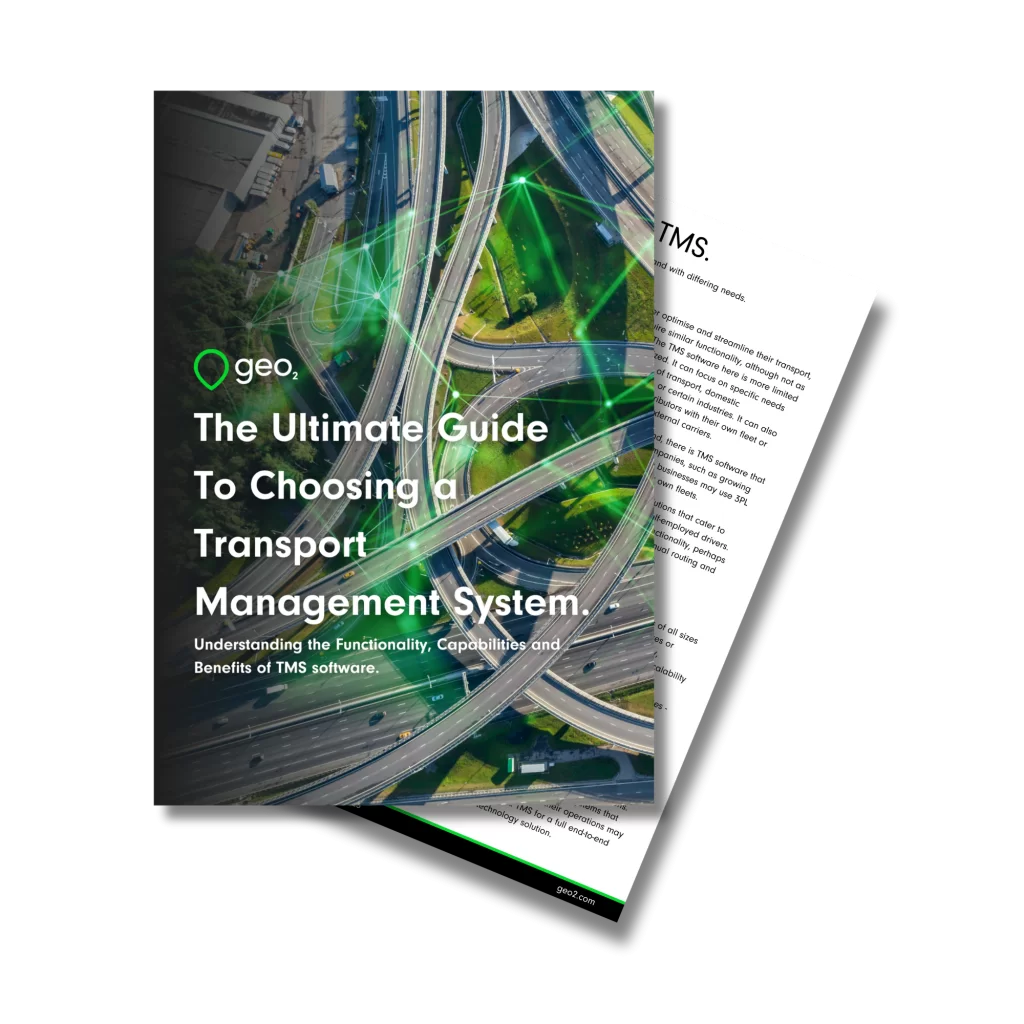
What is Grey Fleet Management: Everything You Need to Know.
Introduction.
This management area involves vehicles—ranging from cars and motorcycles to scooters and bicycles—owned by employees but used for work. These vehicles occupy a unique position, straddling the line between personal ownership and professional use, often leading to a lack of regulation akin to that of company-owned fleets.
Recognizing the significance of managing these vehicles is pivotal. Ignoring it can leave a company vulnerable to legal issues, inefficiencies, and unnecessary expenses, all of which can undercut performance and employee satisfaction.
Need help choosing a TMS?
Download the Free Guide Now.

Table of Contents.
Understanding Grey Fleet.
Definition and Scope.
The scope covers any transport mode utilized for work-related travel that isn’t company-owned or leased. This includes vehicles owned by employees for business travel, those obtained through cash allowances, or hired on a temporary basis. Pinpointing the extent of your organization’s use is the first step towards effective management.
Difference from Company Cars.
Unlike company cars—owned or leased by the organization for employee use—this involves personal vehicles used for work, presenting distinct challenges in compliance, risk management, and operational oversight.
Different from Traditional Fleet Management.
Traditional fleet management encompasses directly managed owned, leased, or rented vehicles. This domain demands a nuanced approach due to the indirect control over vehicle upkeep and condition.
Table of Contents.

Challenges of Grey Fleet Management.
Cost Implications.
It’s also a challenge to handle the costs related to these vehicles. When businesses pay their employees back for using their own vehicles, they need to figure out a fair system. This system must make sure employees are reimbursed for their expenses without costing the company too much money. Finding the right balance here can be tough.
Compliance Issues.
Making sure all these different types of vehicles are up to par with legal standards is tricky. Employers have to check that every vehicle used for work, no matter if it’s a car, bike, or scooter, meets the necessary legal requirements. This means ensuring they’re safe to drive and properly insured, which can get complicated with so many different vehicles involved.
Duty of Care Concerns.
Looking after employee safety is a big deal, especially when the company doesn’t own the vehicles being used. Without being able to check the condition of each vehicle regularly, there’s always a worry about whether they’re safe enough for work purposes. This uncertainty can make companies anxious about potential accidents and their responsibility towards their employees.

Benefits of Effective Grey Fleet Management.
Cost Savings.
On the other hand, when managed well, there can be a lot of cost benefits. By creating a good system for managing these vehicles, companies can save money on things like mileage payouts, reduce the wear and tear on vehicles, and spend less on fuel. This can add up to significant savings over time.
Improved Efficiency and Productivity.
A well-thought-out management program can make everything run more smoothly. By using technology to keep track of how much employees are driving and for what purpose, companies can plan better routes, reduce unnecessary trips, and lessen the time spent on managing travel expenses. This leads to a more efficient and productive work environment.
Enhanced Safety and Compliance.
Putting in place regular checks and maintenance schedules for all vehicles, along with clear rules for work travel, means everyone’s safer. This helps make sure all vehicles used for work are in good shape and that drivers are following the right procedures, keeping everyone compliant with legal standards.

Best Practices and Solutions.
Policy Development.
The accuracy of tracking information depends on a multitude of factors, including the robustness of the carrier’s tracking system, the visibility they have within their network, and their communication to partners and customers. Some carriers may have more sophisticated tracking systems that provide real-time updates, while others might have less visibility once the package leaves the facility.
Monitoring and Reporting Tools.
Using technology to keep an eye on vehicle use is key. This can range from simple forms employees fill out to sophisticated software that tracks driving patterns, fuel usage, and more. These tools help companies stay on top of things and ensure that all vehicle use is appropriate and accounted for.
Alternatives to Traditional Grey Fleet Solutions.
Thinking outside the box for alternatives can also help. Encouraging the use of car-sharing services, public transport, or even remote work can reduce the need for employee-owned vehicles. These options can be more environmentally friendly and cost-effective, offering a win-win solution for both the company and employees.
Conclusion.
Managing employee-owned vehicles for business use extends beyond mere compliance and control. It represents an opportunity to refine operations, bolster safety, and achieve financial efficiencies. By delving into the nuances of this practice and implementing proactive strategies, organizations can harness its benefits, transforming a challenging area into a strategic asset. Through thoughtful policy development, technological support, and innovative alternatives, organizations can navigate this terrain successfully, marking a significant stride in forward-thinking corporate management.






